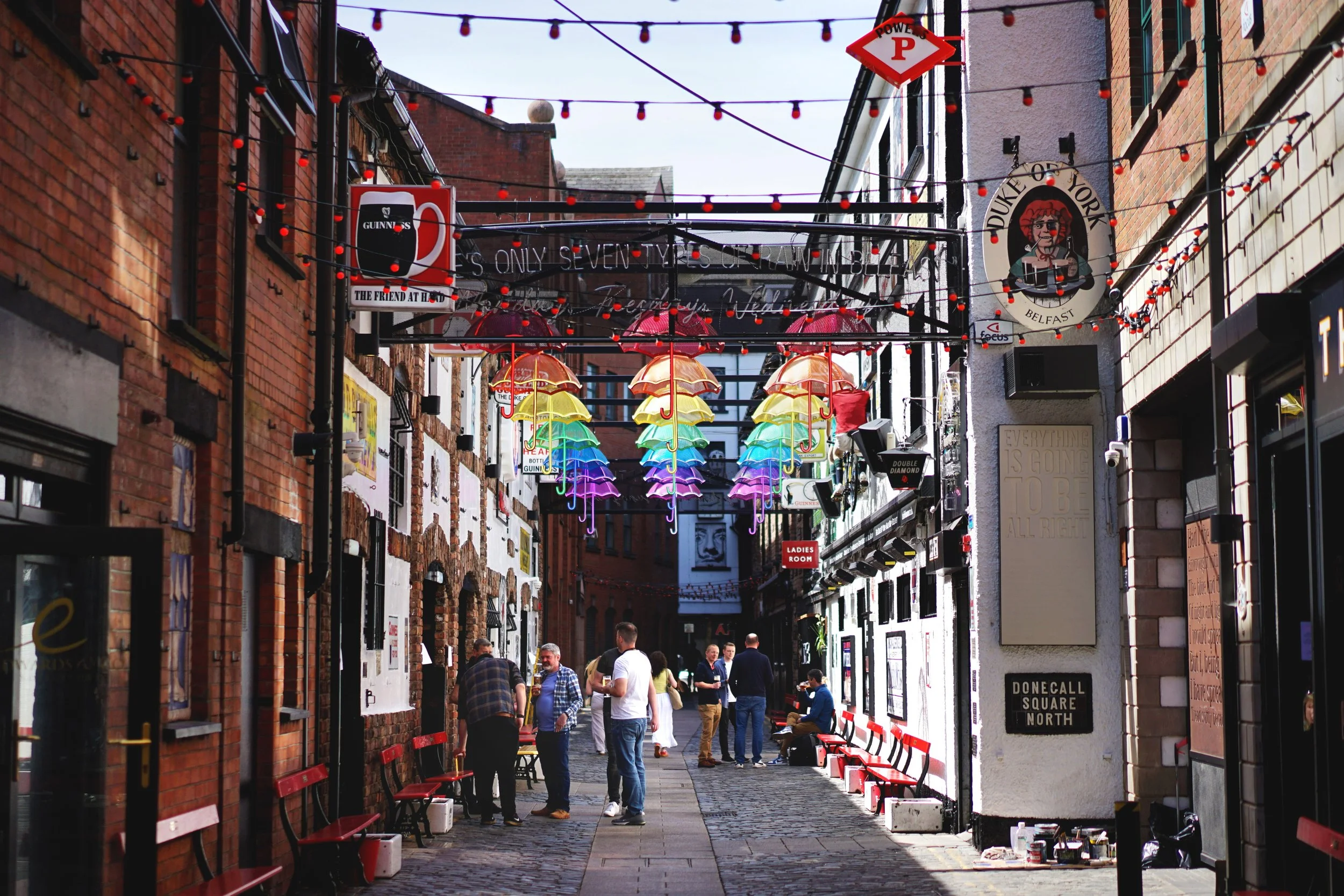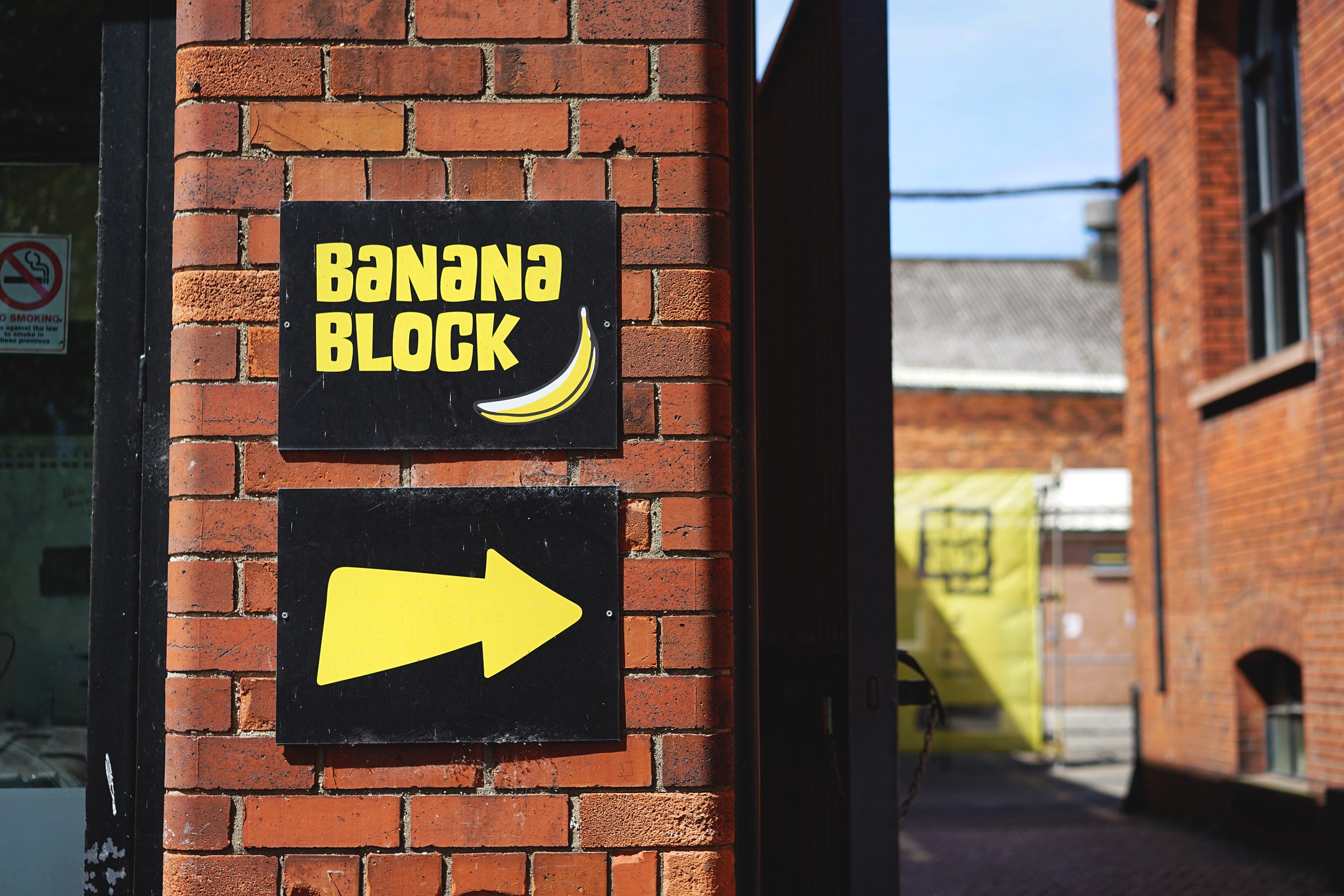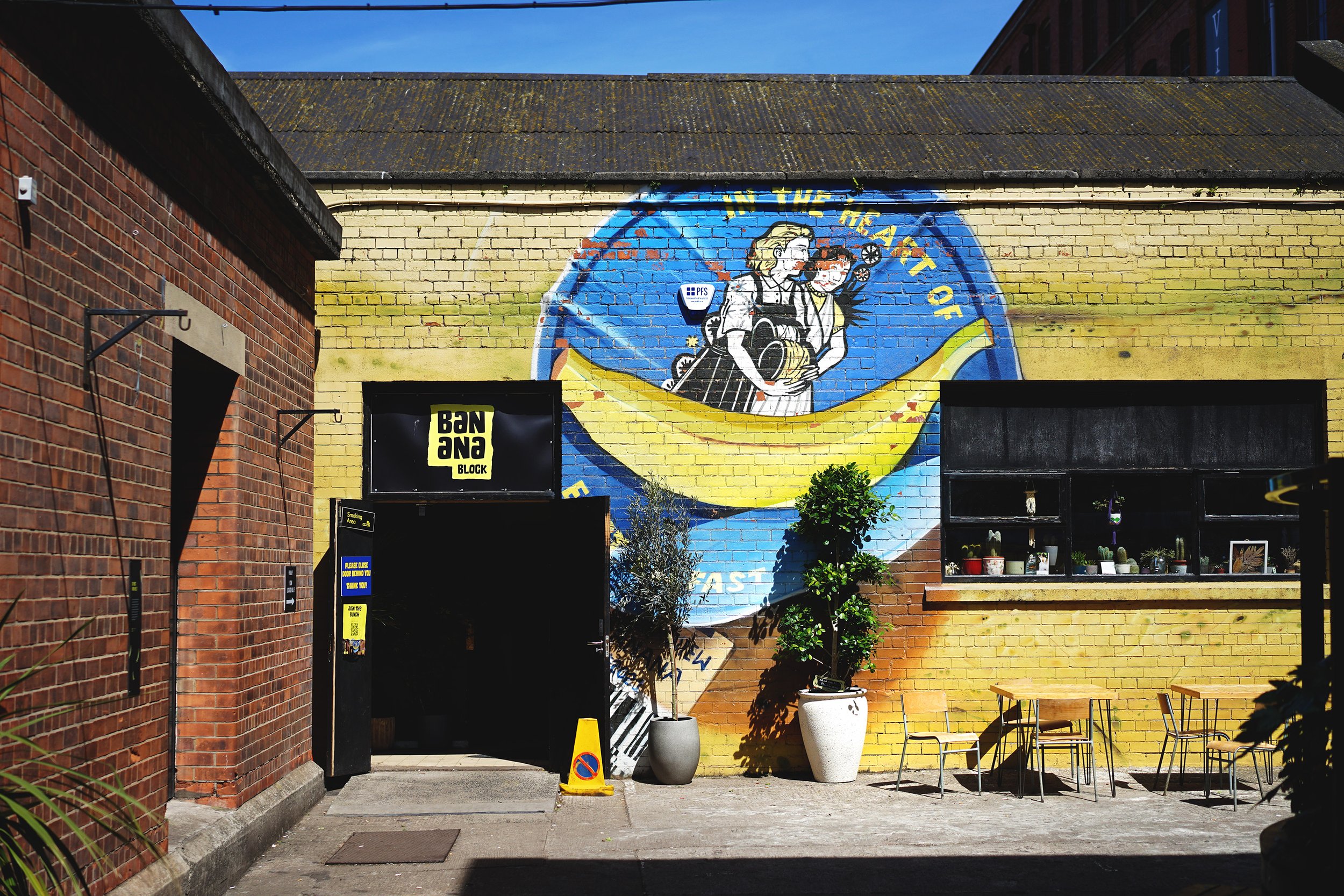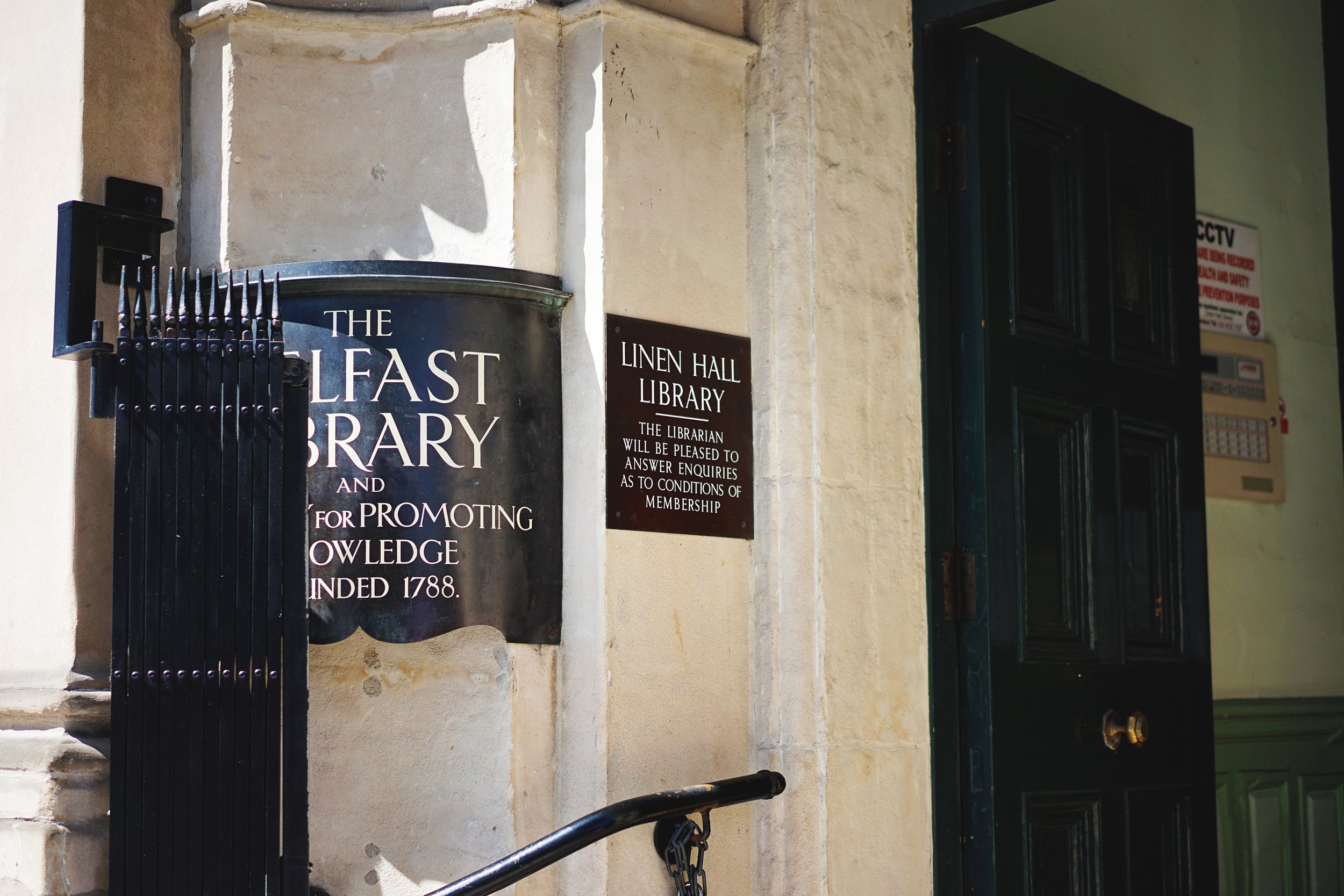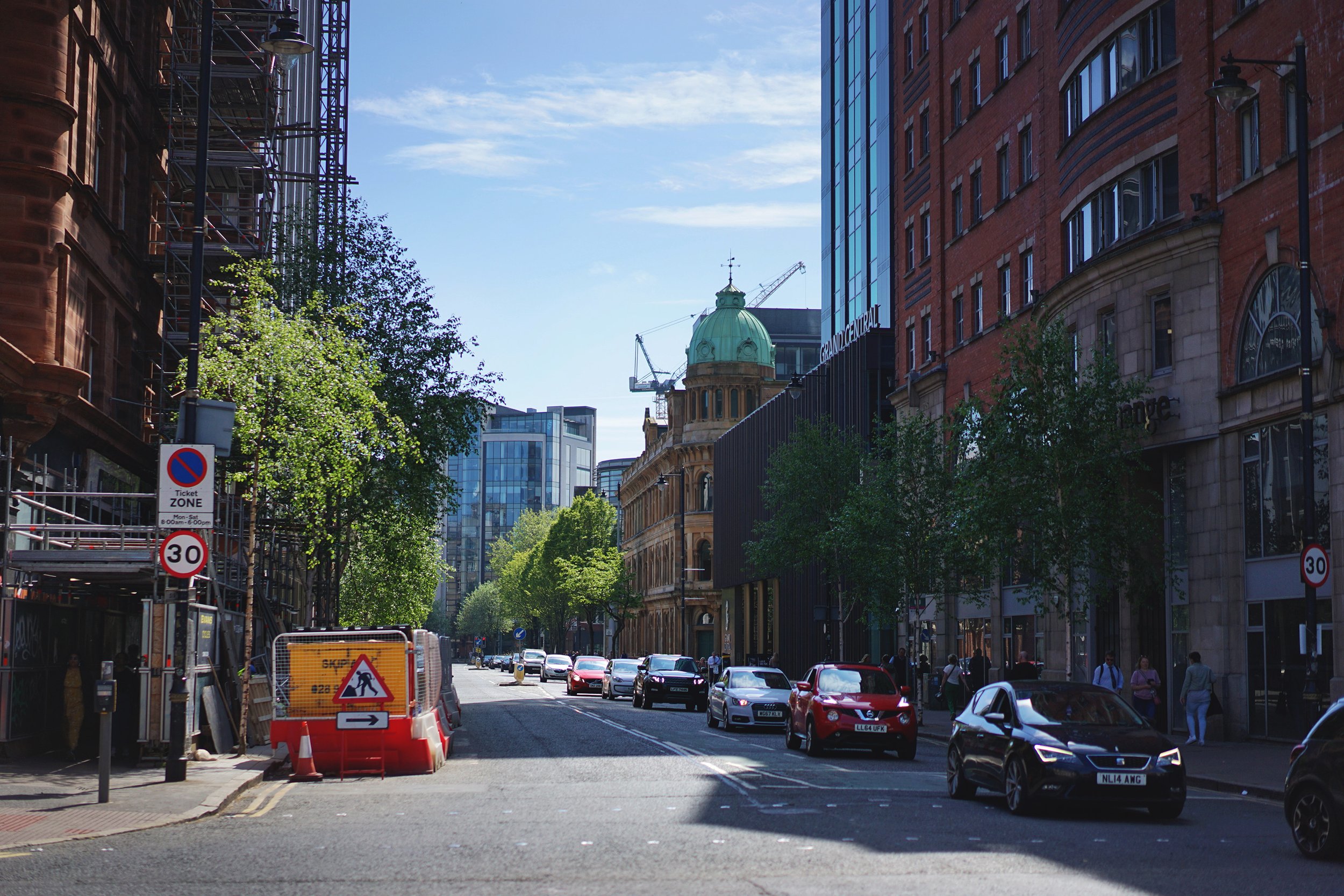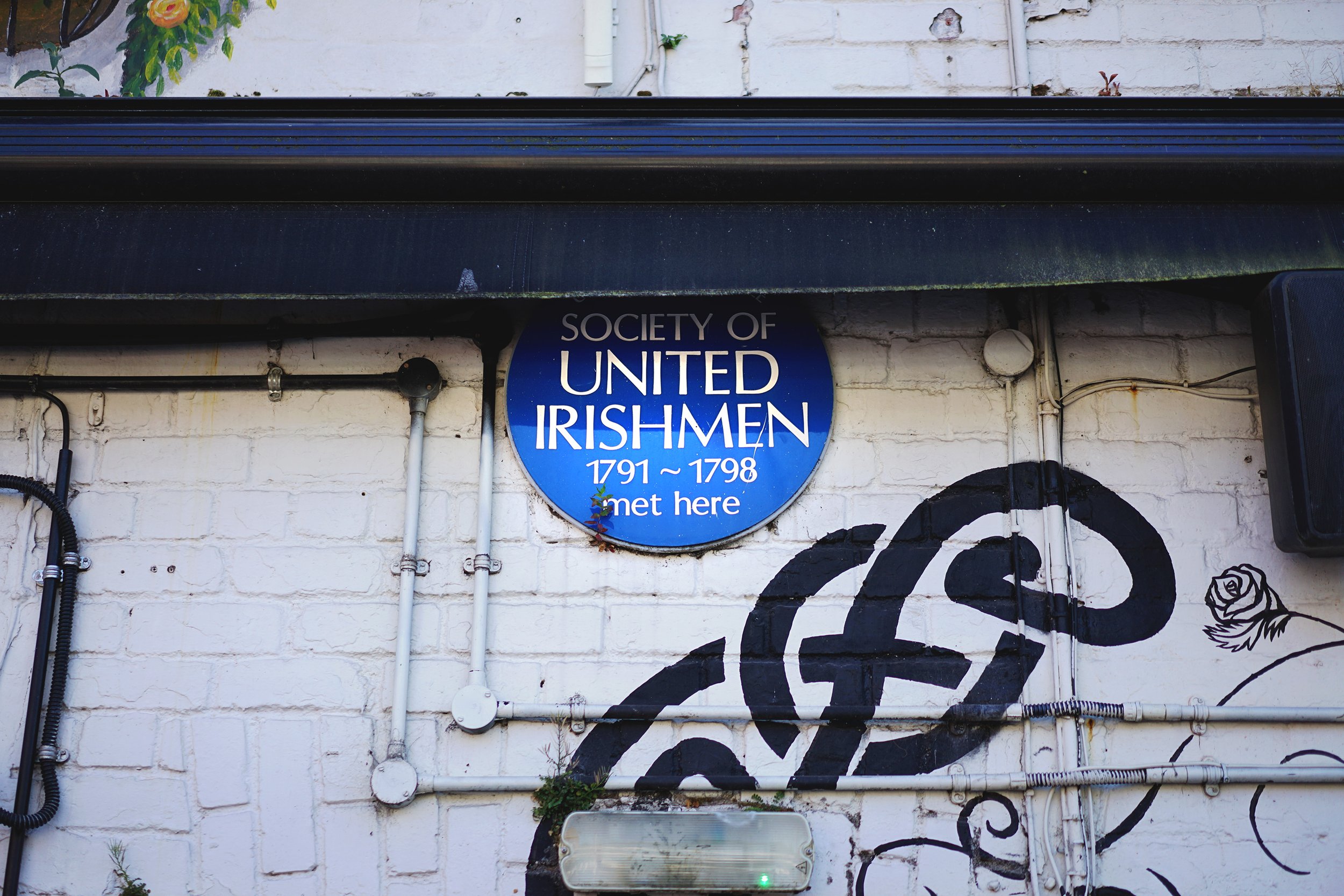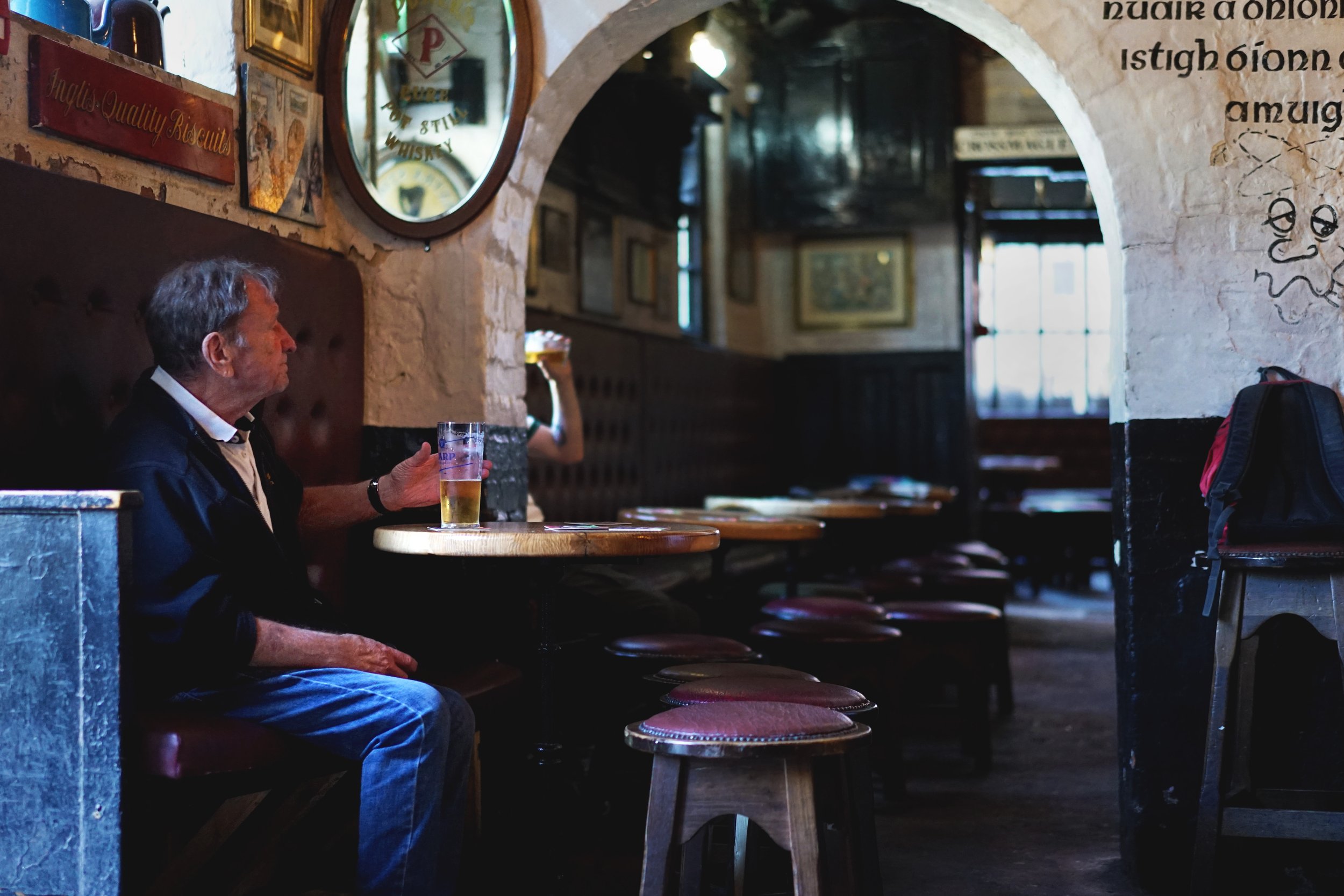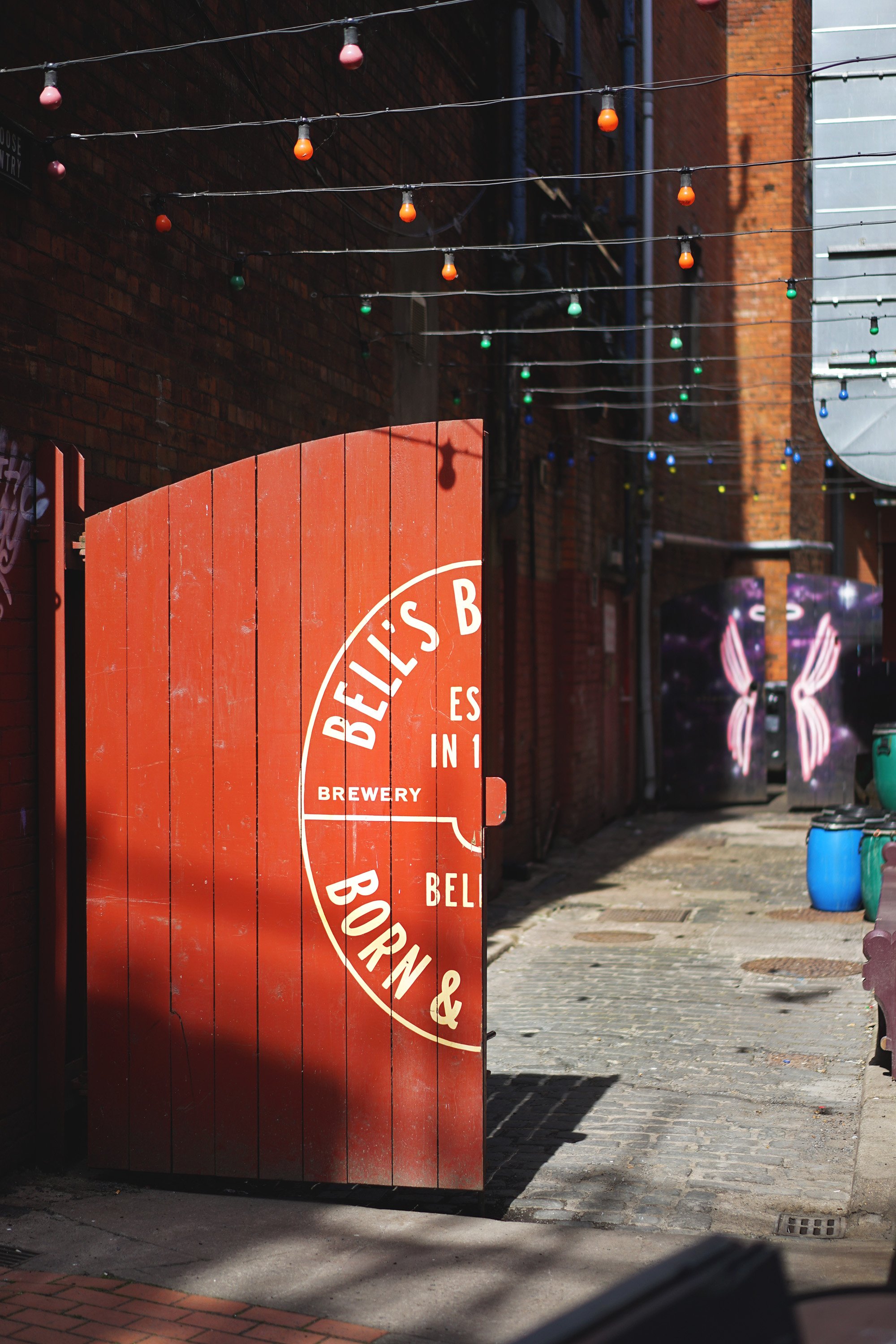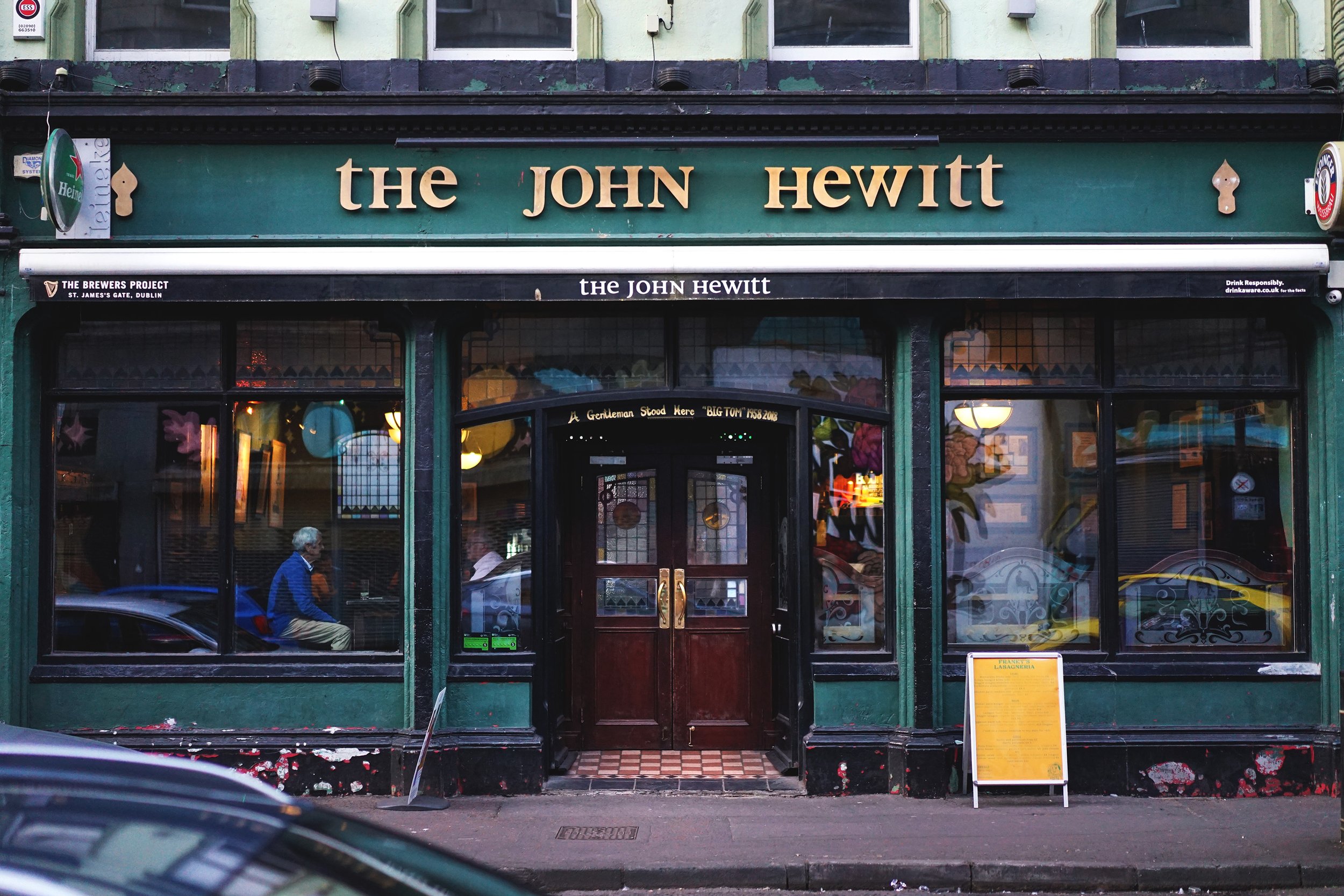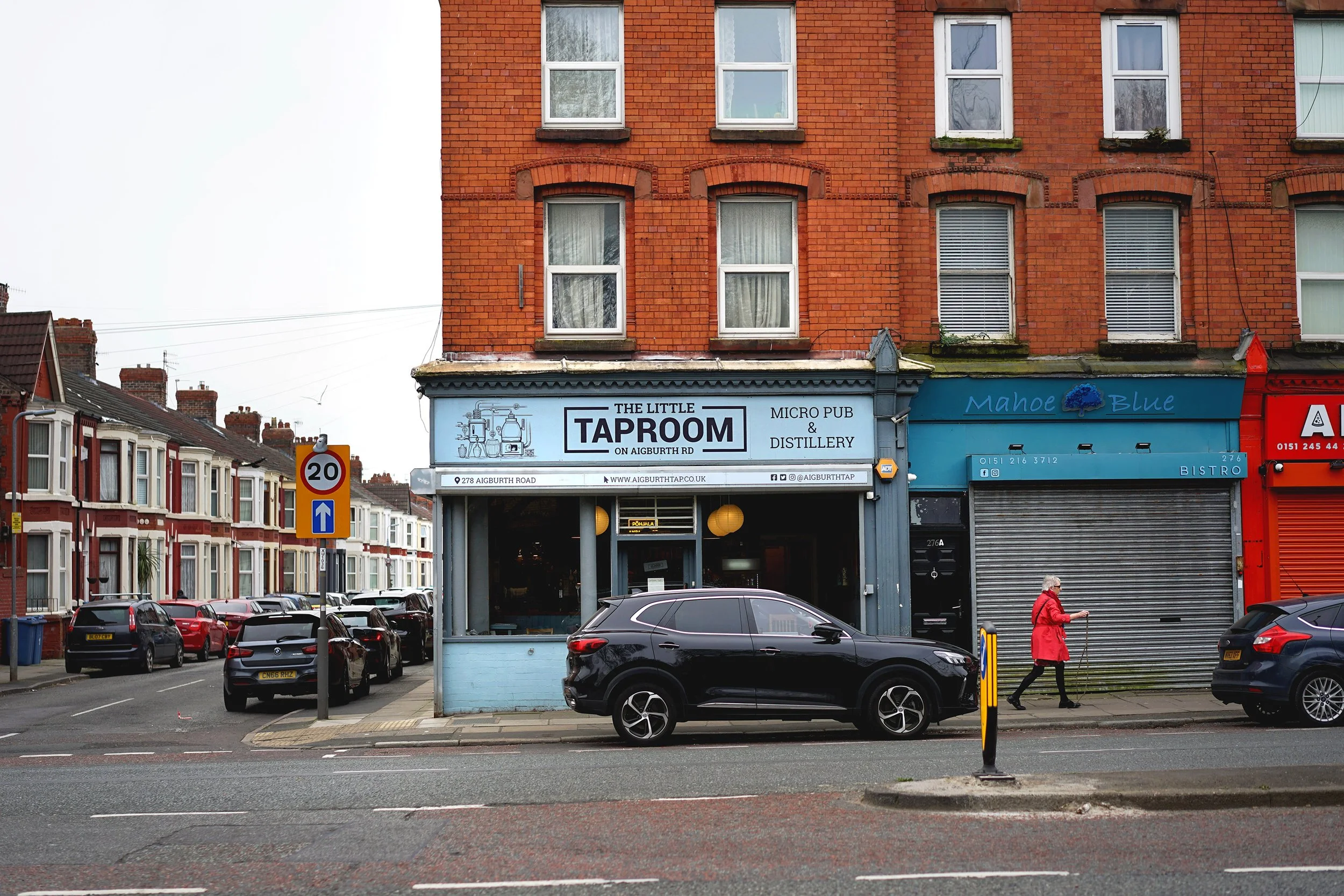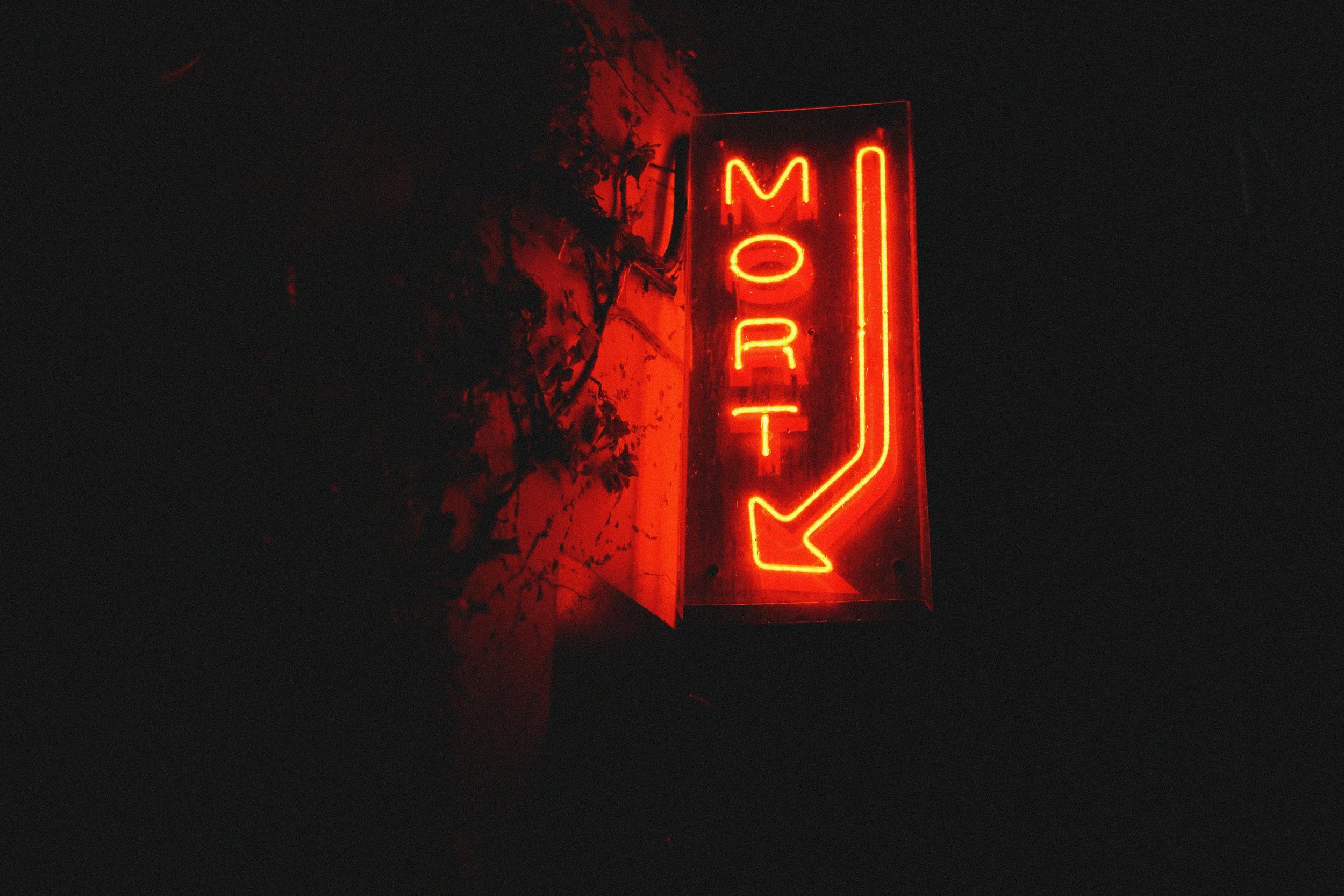Here We Are Nowhere — Exploring Belfast’s Burgeoning Beer Scene
At the 2024 Belfast Beer Festival I’m nursing a glass of something dark and not particularly pleasant. Although its pleasantness—or lack thereof—isn't especially important to me right now, such is the custom at these things. The gamble is all part of the fun. The brewer will remain mercifully unnamed and, because as we know, my unpleasant might be someone else’s dream drink, right?
Scanning around Banana Block—the hip repurposed industrial event space in East Belfast where this landmark event took place—I started to think about my home, Belfast, and its story through beer. The place was rammed, “you couldn't turn a sweet in your mouth,” as the old Ulster saying goes. Young and old surged towards the taps as the building bubbled with chat and laughter. There was a vibrancy about the event, a kind of attractive buzz that I feel all around Belfast these days. No city’s perfect, there’s a lot about Belfast I’d change, but my ambivalence towards the city I moved to as a teen has of late turned into a full-fledged love affair. The negatives don’t outweigh the positives. Or to use an appropriate metaphor—one bad beer doesn’t spoil a beer festival.
Photography by Matthew Curtis
While this article is not a definitive guide, it is a reflection on an ever-changing landscape; a snapshot of Belfast and several of its beer destinations through this particular admirer’s eyes. I’ve thrown in some recommendations and personal favourites too, at least favourites until I get sick of a certain beer or move onto a different preferred pub, as fickle as I am.
It makes sense to begin where the majority of our visitors sip their first pint in the city, The Crown. The visiting multitudes flock to this old, saloon style boozer, often walking right past a host of excellent pubs in the process. But what, exactly, makes this pub so popular with tourists? As much a museum of Victorian interior curios as it is a pub, The Crown is undeniably beautiful. Its stained glass and period gas lamps are charming and the carved woodwork everywhere is stunning. The atmosphere is ever lively and, finding myself here midweek around midday, I squeeze through the crowd to the impressive marble and tile bar to order.
There are a handful of cask hand pulls, which due to the knock on effects of a complicated and restrictive pub market landscape (the reasons for which we’ll get to later,) is not a particularly common sight in a Belfast pub. One such tap offers Plum Porter by Titanic Brewery. As the ill-fated vessel was built here in Belfast it’s something of a touristic touchstone and I’m sure many a glass of it is sold to our international visitors looking to sample something local and thematically on brand, which it might be. But local? Not even close. Titanic Brewery operates out of the decidedly landlocked Stoke-on-Trent.
“Local beer in a pub is a rare sighting in Belfast, no matter how it's served!” — Willy Mayne, managing director, Bullhouse Brew Co.
The most frequent beer order here, as well as most establishments across Ireland (and indeed, Britain) is, of course Guinness. Opting to do as the Romans do, I order a pint and contemplate Belfast as if I’ve just arrived on one of the huge cruise ships moored a couple of miles away at Pollock Dock. So this is it, Level One in Belfast beer drinking: A Guinness in The Crown Bar. The dark, familiar murk, brewed down the road in St James’s Gate, Dublin (and packaged right here in Belfast) is cool, refreshing and goes down easily amid the touristic veneer around me.
The Crown has history, there’s no doubt, but the city’s beer culture predates the iconic pub by quite a distance. Breweries and adjoining taverns have existed in Belfast since at least the 18th Century—a particularly fruitful century for beer culture. I oversimplify drastically here, but after a harrowing 1600s and a more conservative 1800s to come, Belfast in the 1700s was an optimistic and modern city by European standards.
By the middle of the century the city’s infamous entries—narrow passageways that criss-cross the city centre—bubbled with new philosophies, cultural renaissance and revolution. The Linen Hall Library and the Assembly Buildings on Waring Street staged famed ideological debates. Most notoriously the Society of United Irishmen conducted clandestine meetings in taverns and inns throughout Belfast. Formed in Belfast in the wake of the French Revolution, the United Irishmen were a revolutionary society composed mainly of presbyterian merchants. Their core principles included rejection of British rule, universal suffrage and catholic emancipation.
Today a whole series of establishments vie for the title of Belfast’s oldest pub, thus linking them to this agitative period. White’s Tavern in Winecellar Entry and McHughs on Queens Square make a good case for the title, and modern tributes to that period pop up regularly too. The relatively new statue of revolutionary Henry Joy McCracken outside The Jailhouse bar being one example, and the excellent, Michelin-starred restaurant The Muddlers Club being another.
None of these taverns exist today exactly as they would have, but Kelly’s Cellars, opened in 1720, looks and feels pretty close. As the Ulster Historic Circle plaque outside attests, Kelly’s was a meeting place for McCracken and his fellow revolutionaries as they planned their ill-fated rebellion in 1798.
Like The Crown, Guinness vastly out-sells any other offering here, but also like The Crown, Kelly’s offer a popular alternative, Harp. This is as unremarkable a lager you’re ever likely to find, but the next logical step on this journey. Despite its “Pure Here” slogan, Harp is also made at St James’s Gate in Dublin, and yet it is extremely popular in Belfast. By St. James’s Gate standards, Harp is a mere child in age, launching in 1960 as opposed to its more popular product in 1759, but has maintained a cult-like status in The North since its creation.
While my description of Harp Lager as “unremarkable” might sound like criticism, this is not my intent. When creating Harp, owners Guinness (in its pre-Diageo era,) along with the guidance of German brewers, wanted to create an easy drinking, uncomplicated lager in response to the growing popularity of continental beers at the time. Something that would be easily guzzled in the pubs of The North. And, for all intents and purposes, they did just that. For a native of Ulster there’s a kind of nostalgia in the everyday beer-ness of Harp, so I opt for one and nestle in a cosy alcove. It is of course simple, refreshing and easily swigged.
“That comfortable everyday lager that is not remarkable—almost remarkable in its “unremarkableness.” I feel connected to NI or Ireland as a whole when I see Harp, it’s got that great nostalgic heritage.” — Jonny Hamilton, co-founder, Pellicle
With the stony floor, vaulted ceiling and iconic low arch that grasps over the bar, Kelly’s is a much more informal affair than The Crown. The historic and political trinkets and stickers adorning the walls are eye-catching—the place hasn’t lost its edge. As with other excellent pubs like The Sunflower, Maddens, The American Bar and many more, Kelly’s has a bohemian, alternative feel to it, with artists and musicians forming a significant percentage of its regular trade. Indeed, Irish trad sessions are an almost nightly occurrence in Kellys. The pub was immortalised by Irish music royalty, The Dubliners, when in 1967 the album cover of More of the Hard Stuff featured the band propping up the bar, while bandmate Luke Kelly poured the pints.
Quite rightly, Kelly’s and The Crown have changed little over the years, but that’s not to say Belfast and its beer is an entirely fixed concept. The place brims with lively modern bars like any small touristic city in Europe, and new takes on age-old traditions have been popping up more and more. This is true for smaller breweries too. The now sadly defunct ABV Festival and the aforementioned more recent Belfast Beer Festival have been crucial in pulling the beer environment forward. Whilst some small breweries have come and gone in recent years, like the much missed Farmageddon, the scene has continued to grow.
Enter (amongst others) Out Of Office Brewery (OOO), situated within the ever-trendy Ulster Sports Club is located on High Street. Once a social club where sports fans would congregate in the somewhat neutral space of the city centre, throughout The Troubles it had a reputation as a non-sectarian safe space visited by Belfast’s sporting giants including Mary Peters, Alex Higgins and George Best.
At the bottom of the hall that leads to the toilets, adjacent from the retro-panelled walls and old trophy cabinets, is an unassuming lift that will transport you up to the brewery taproom on the second floor. It’s a bright, slick, minimal space oozing with style. There’s a sense of fun here too, with a series of playful originals by excellent Belfast illustrator Fiona McDonnell that bedeck the walls. I arrive on a quiet Thursday just around opening time, soak in the ambience before it gets busy, and order a Pencil Pusher session IPA.
A tune from Talking Heads is blasting and I’m feeling buoyant, glugging away at this refreshing pint; mellow and gentle with a pang of grapefruit bitters on the finish. Surely any visitor would consider this a great find, a vibrant wee hideaway making interesting beers, OOO is definitely adding something to the boozy tapestry of the city centre. Pleasingly, you don't need to venture too far from here to find another small, contemporary brewery knocking up delicious drinks in-house and serving them in their quaint connecting bar next door. The Deer's Head on Lower Garfield, home to the accompanying Bell’s Brewery, is yet another excellent destination for visitors of Belfast who’re looking to dig a little deeper than just Guinness.
These new venues are somehow popping up in spite of the archaic systems that have hampered independent ventures for years. I spoke with Willy Mayne, the founder of Belfast’s Bullhouse Brewery, about these challenges. Willy, who’s also active within SIBA—The Society of Independent Brewers and Associates—knows more than most about the problems independent brewers and pubs face, he sets out the insane challenges thus:
“The main issue is that the surrender principle prevents new entrants from entering the pub market. This in turn drives up the volume in the small number of subsequently very large pubs that exist, especially so in Belfast. As a result, these pubs are very valuable, as the value of a pub is linked to its turnover. In the rare event that pubs in Belfast change hands (most are family owned for generations,) it's usually to the tune of several million pounds.
As the high street banks’ lending criteria is set at a UK wide level, generally they look for a 35-40% deposit. That's a fairly hefty lump sum and there aren't too many prospective pub owners with a couple of million down the back of the sofa. That's where the multinationals step in. They'll lend the cash, usually with an interest free loan for a bit of a refurb on top, but in exchange they'll tie up 100% of the draught lines, usually for 7-8 years. They'll also take a first charge mortgage over the property and the license, and they essentially operate a leased and tenanted pub model, but without any provision for guest beers.”
Despite this immense hurdle, interesting Belfast beer locations, don’t dry up once you head to the outskirts of town. Crossing the River Lagan and heading down the leafy Ormeau Road will bring you to Northern Lights. Owned by Galway Bay Brewery, the bar purports to offer The North’s “largest selection of craft beer.”
The vibe is relaxed and friendly and it’s well-worth popping in, particularly if you can time your visit with one of the trad music sessions that happens across the road at The Errigal Inn every Saturday afternoon. This little Ormeau Road double act, represents the yin and yang of pub hopping in Belfast; contemporary beers in an open modern space then over to The Errigal’s stunning Oak Room back bar for some live Irish music and a whiskey.
Heading eastwards from the city centre to Newtownards Road in Belfast’s old industrial district, lands us in the city's fledgling ‘Beer Quarter,’ if such a thing exists. The double threat of Bullhouse East and Boundary taprooms makes for another delightful pub crawl. The significance of both of these breweries is perhaps hard to overstate. Within a relatively short time (with Boundary set up in 2014 and Bullhouse established in 2016, respectively) they’ve created a foundation that the entire scene radiates from. Their stature can be experienced when visiting this stretch of Newtownards Road. Within the gravitational pull of the aforementioned Banana Block, as well as excellent eateries like the extremely popular Flout Pizza and the superb Jumon East, this part of Belfast feels lively and exciting.
Bullhouse, with its sheeny minimal look, is my regular. With 20 taps and fridges bursting with carry out cans, the place always has a pleasant noisy-ness about it. Invariably I opt for a Road Trippin’ extra pale. Despite sampling countless excellent beers here, I’ve always aspired to be able to go into a place and order “the usual” without any confusion. I’ve been working on cementing that custom at Bullhouse for months now, interrupted by bouts of sampling outlier stouts and an occasional orange wine.
Road Trippin’ is a refreshing, crispy, Citra-heavy offering with something of the rutaceae about it. A perfect beer for lively spring nights, especially when combined with friendly chance encounters that seem almost inevitable every time the glass door swings open at Bullhouse. The place is a meeting point, highly social and guzzleable beers like this one pair so spectacularly with this festive, dare I say it, party atmosphere. Inspired by Willy’s beer awakening on a road trip visiting friends in the US in 2011, in this beer they’ve created a tribute to zippy, clear, bright West Coast-style pales and, for me, it really works.
“We’re really aware of where we are in the city, and we’re really really interested in having this be a space for everyone.” — Karson Browne, Bullhouse East
A strong community ethos runs deep at Bullhouse. There seems to be an effort to slot into the Newtownards Road in a sympathetic way. Bullhouse brings something genuinely new to the area but avoids pushing anything crucial out. In an area that was until recently fairly deprived of nice welcoming places for a pint, general manager Karson Browne is keen to promote inclusivity.
This is evidenced in their wide ranging event schedule too. A diverse customer base packing out everything from book clubs, to open mics, cheese tasting to “square eye sessions,” where punters can be found battling it out on Mario Kart between slugs of IPA.
A short dander from Bullhouse East brings you to Boundary Brewing Cooperative’s taproom and adjoining brewery, Bullhouse’s big brother—at least in terms of years. Boundary’s early days on this site brought a palpable sense of anticipation. One off tap room events at the brewery became more and more regular, rumours spread about plans for a permanent bar on the site. In what felt like something new for the city, punters sat at makeshift tables drinking novel exotic beers, listening to leftfield DJs and studying John Robinson’s abstract paintings that also adorn Boundary’s cans. Through Covid, Boundary used the vast upstairs floors of their site in Portview Trade Centre for socially distanced pop ups. Utilizing the old factory floor in such a way represented a dovetailing of their forward focused enterprise and the area’s industrial heritage.
“The John Hewitt as a location is huge. We’re very lucky that we have a pub in the Cathedral Quarter.” — Sam Curley, head of sales, Boundary
When launching the brewery, co-founders Matthew Dick and Matt Scrimgeour opted for a cooperative model and over the course of a number of share raising windows it’s now 2000 members have helped support periods of scaling up and, indeed, the creation of the excellent taproom space, opening its doors to the public at last in March 2022. Boundary’s business model offers, in theory, an extremely democratic enterprise for its community of shareholders, each with a vote, a voice and a say in how a company is run. Not without its challenges, this community focus has set Boundary apart, counting itself with only a handful of other such enterprises on these islands, including Lacada Brewery in Portrush.
The John Hewitt sits in the heart of the Cathedral Quarter on Donegal Street, wedged between a series of historic entries. In 2022 Boundary was entrusted to take on the historic pub. Owned by the Belfast Unemployed Resource Centre and named in honour of the legendary Belfast poet and thinker, The John Hewitt holds the unique title as the region’s first social enterprise bar. Its credentials as a community driven, socially minded location chimed with Boundary’s co-op model and thus an excellent connection was made.
Boundary breathed new life into the pub’s drink selection, with 16 taps of carefully curated beer, but crucially they maintained the essence of what made The Hewitt special. Sipping an Imbongo, Boundary’s exalted tropical IPA, I look around the pub. In the corner, old school raking regulars loudly mix politics and comedy in a good-spirited way, only witnessed in the pubs of Belfast. Curious beer tourists wander in for a half pint and seem confused by Belfast Groove Collective’s distinctly un-trad-session-y music pouring off the stage. Art fans use the pub as a staging post before they stroll off to Late Night Art, a simultaneous public opening of the city’s art spaces held on the first Thursday of every month.
It’s this push and pull, tradition and innovation, that makes Belfast so interesting right now. It is a city more comfortable with its variety than ever before, and more dynamic for it. It was that bustling crowd, to-ing and fro-ing in Banana Block at the beer festival, that reminded me of this. Reflecting on the city as I write this article reminds me of how excited I am by it. When Hewitt said: “Time and this island tied a crazy knot” he was right, but might this “crazy knot” be a positive? Perhaps it might just be what makes the city so alluring.


